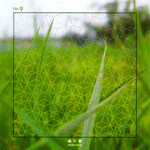|
|
 |
Dusted Reviews
Artist: No. 9 Album: Mushi-No-Ne Label: Locust Review date: Mar. 31, 2004 |

|
|
|
 |
Coming to the Chicago label Locust from the fertile musical climate of Onkyo, Japan, No. 9 (Joe Takayuki) creates laptop beats ground in the grist of nature sounds, placing himself in a realm of established artists like Nobukazu Takemura and Greg Davis.
Takayuki established his ear for sound collage on the single from Mushi-No-Ne released last fall, “Where come from? And where to?” The song is built from cut up snippets of a female singer supported by an almost comical jazz bass line, and just a crystal curtain of electronic tones in the background. The variety of styles and the manner in which they’re sewn together is emblematic of Takayuki’s pop-infused production. However, as a preview of the album, the success of the single was stymied by remixes from Hrvatski and Bundy K. Brown, which, though competent and creatively interpretive, flattened Takayuki’s peaks and puddles onto the same plane. The Brown interpretation is particularly violent – he paints within the lines of the Takayuki’s soundwaves and rewrites a minimalist composition in the identical pattern. A quality piece for sure, but after the invigorating original, the patience required is hard to muster.
Mushi-No-Ne surrounds this single with an equally impressive assortment of pieces, all of which showcase Takayuki’s laptop manipulation. He does not cull his samples from clashing sources for the “strange bedfellows” effect – most are organic sounds, or light vocal or electronics samples – but nonetheless he plays to the dissimilarities in each layer, so that the piece feels as if it could move in six different directions simultaneously. Each element retains its identity. In “Bug Beats,” for example, the chirp of crickets repeats at its own pace, the IDM feel of the recurring bass line and live drum sound is an explosive burst of purely mechanical motion, and the drips of keyboard tones contain icy echoes of a natural phenomenon. Takayuki’s skill in channeling competing worlds of sound, each as its own mantra, exploits the advantages of both natural and digital worlds without flattening the two into a narrowly circumscribed studio vision.
The bridge between the realms of the organic and the electronic is often spanned by a minimal approach (Greg Davis’ latest, Curling Pond Woods, is hardly electronic-influenced at all). That’s why I was so taken aback by the intensity that No. 9 brings to the forefront on Mushi-No-Ne. A descendent of Takemura in this respect, Mushi-No-Ne seamlessly combines the playfulness of Takemura’s Songbook and the evocative ambience of his Water’s Suite with an added sense of humor.
By Joel Calahan
|







